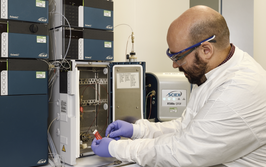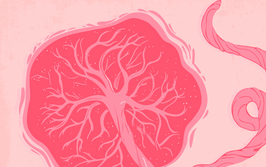The (DILI) Model of Success
How can we accurately predict the hepatic safety of drugs and reduce the risk of liver injury in patients?
As any drug researcher, developer, or manufacturer knows, even the most promising products can plunge into the “valley of death” – taking any potential therapeutic benefit with them. Though a multifactorial problem, drug-induced liver injury (DILI) is a particular significant challenge during preclinical or clinical phases, and may present itself through a number of different cell pathologies, including necrosis, apoptosis, cholestasis, steatosis, inflammation, and fibrosis.
Unfortunately, DILI is not always spotted during development, instead being encountered in the post-marketing phase of a drug’s lifecycle. As a stark example, troglitazone – a treatment for both type 2 diabetes mellitus and severe heartburn – managed to slip through the rigorous net of drug developers and became embroiled in controversy with a slew of liver toxicity cases in the 1990s. The FDA withdrew the drug from the market in 2000, but the lasting damage has made drug developers even more cautious about some aspects of development.
Post-marketing DILIs, unlike preclinical and clinical forms of the adverse event, are arguably more challenging for companies to contend with; they not only impact patients’ lives but also damage public opinion of the manufacturer.
“The troglitazone case was a classic example of what can go wrong when DILIs emerge,” says Armin Wolf, Chief Scientific Officer at InSphero, a company focused on the development of 3D microtissues “The liver is an incredibly complex organ, and its dynamism means that drugs can induce various pathologies. And with factors like age, sex, and environmental conditions influencing its behavior, it can be difficult for companies to accurately predict when a DILI event might occur.”
To avoid a repetition of the unfortunate situation, selecting the right models to test drugs is crucial, explains Jonathan Jackson, a senior principal scientist at Pfizer. “DILI is a huge problem for the industry to contend with. Between 1953 and 2013, 83 drugs out of 462 across the life science industry, which were granted marketing authorization, were withdrawn for causing DILI; that represents 18 percent, which makes DILI a leading cause for drug failure. A key driver of the problem in a contemporary context is the fact that the research community has focused on the development of the wrong types of in vitro systems. DILIs typically affect phenotypic outliers, yet the majority of in vitro systems used to identify hazards replicate normal human liver function. We need relevant models so that we have more clarity on the range of responses that can occur when drugs are administered.”
With the aim of creating an improved testing and validation platform, Jackson and Wolf, alongside colleagues from Sanofi, Merck Healthcare, Genentech, AbbVie and Takeda have launched the X-Species DILI Validation Consortium. This pre-competitive group aims to address the challenges DILIs pose for the drug development process by developing next-gen testing methods. Their approach is likely to rely on the use of 3D microtissue models, which they expect to help bridge the gap between in vitro and in vivo responses to drugs and identify those most likely to cause adverse events in patients.

Armin Wolf, Chief Scientific Officer at InSphero
Something new
3D cell cultures have been available for some time and boast significant benefits when it comes to quickly and efficiently identifying disease states and adverse reactions in cells. “3D models are superior to conventional 2D models because they allow companies to work with all the components of liver cells in a 3D constellation and avoid the use of animals during testing,” says Wolf. “Another benefit is that the cells can be maintained for long periods of time in this format – with cells surviving for up to 30 days. In 2D models, the same cells function only up to 24 hours but most cases of DILI can take weeks to manifest.
As the industry further explores the development of biologics and advanced medicines, 3D systems could also help elucidate immune responses to these newer drug classes because they contain Kupffer cells, which are part of the innate immune system. Wolf says, “Small molecules will continue to play an important role in the sector, but more companies are getting involved with new therapeutic modalities and therapy types. 2D cell cultures simply don’t have the capacity to provide clear insights into immune-mediated toxicity. Ultimately, 3D models do better predict the DILI response in living human. The 3D liver microtissues have the potential to become more immune competent by co-cultivation with immune cells from the blood.
However, the use of these technologies is not yet universal across the industry – with some citing concerns about their characterization and others expressing a general reluctance to adopt new systems, which could potentially introduce risk into their processes. However, Jackson says that the consortium is keen to see more across the industry embrace them and so that the safest and most “translatable” compounds can make it to market.

Jonathan Jackson, a senior principal scientist at Pfizer
Seeking validation
As its name suggests, validation of new 3D models lies at the core of the consortium's activities. And, says Jackson, they plan to test 3D models across species: “Not only will we explore the impact of DILI on human liver cells, but those of rats, dogs, and monkeys – commonly used as regulatory testing animal models. This effort will enable us to determine the signals of liver injury at both the preclinical and clinical development stages.”
Consortium members are expected to provide five proprietary compounds from programs that stopped or failed as a result of DILI that can be tested in 3D models, providing a diverse picture of the chemistry influencing liver pathologies. Wolf explains, “By examining these compounds, we will be able to compare previously reported in vivo responses to in vitro responses in our preclinical 3D models.” The chemical structure and therapeutic target of test compounds will be blinded to protect companies’ intellectual property and to keep the focus on the factors driving cell pathologies.
Ultimately, the consortium expects its work will set new standards in the drug development process, so that the safest drugs make their way to patients. “Currently, drugs are tested in animals, and safety benchmarks are set based on these tests. However, in some cases, these safety margins aren’t enough as DILI still occur when drugs are introduced to patients,” Wolf says. “Therefore, the most important part of this project is that we learn whether these models are capable of recapitulating liver pathologies caused by the DILI compounds. Our learnings will help us modify the current toxicity testing paradigm and future translational safety strategies.”
The team plans to present its first updates on the consortium during a special Exhibitor-hosted session at the Society of Toxicology annual meeting, which will take place March 27th-31st in San Diego, CA.
If you’d like to know more about the consortium or get involved, contact Armin Wolf.
After finishing my degree, I envisioned a career in science communications. However, life took an unexpected turn and I ended up teaching abroad. Though the experience was amazing and I learned a great deal from it, I jumped at the opportunity to work for Texere. I'm excited to see where this new journey takes me!



















